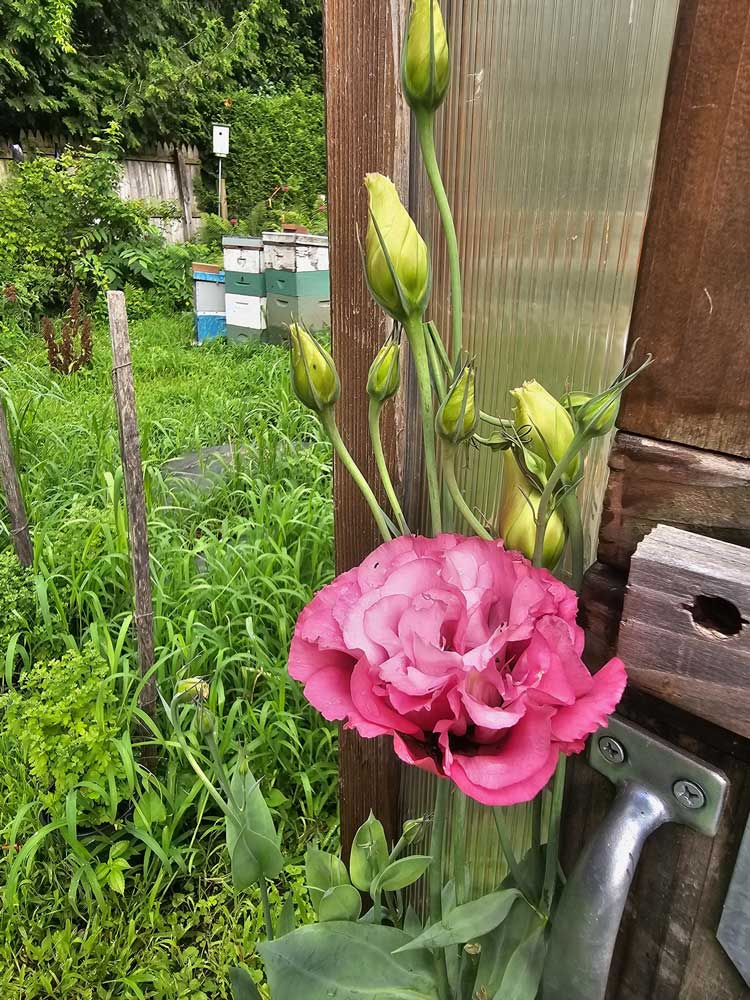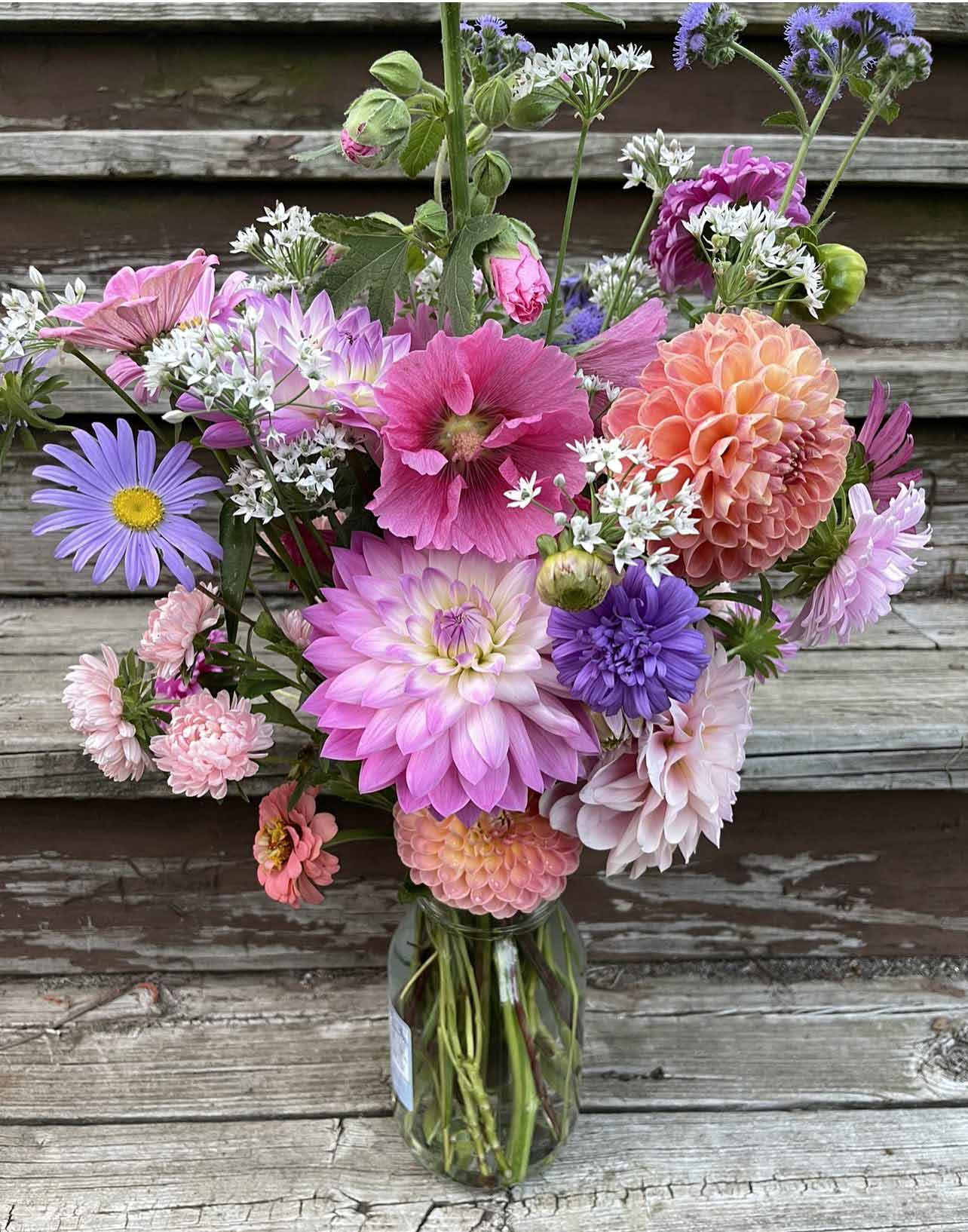About Lisianthus
For gardeners who love the look of roses and ranunculus blooms, we have another gorgeous option: lisianthus flowers. The darling of the floral industry, lisianthus are cherished for their soft, elegant colors displayed on wispy, delicate petals. Often seen in bridal and summer bouquets, lisianthus are celebrated for their resemblance to roses, but enjoy a longer vase life.
Lisianthus are tender perennials that are often grown as annuals in cooler climates. Gardeners in frost-free climates can expect to see their lisianthus come back year after year.
When to Plant Lisianthus Seeds
Lisianthus seeds can be started indoors in early spring, 8 to 10 weeks before the last frost date. Sow lisianthus seeds in seed trays, planting each seed at a depth of ⅛ inch. Space the seeds two to three inches apart to allow room for growth. Cover the seed trays with plastic wrap or a clear lid to retain moisture and heat. Place the trays in a warm location, such as on top of a heat mat, with temperatures between 70-75°F to aid in germination. Keep the trays in a bright location and keep the soil moist but not wet. Germination typically occurs within two to three weeks. As the seedlings grow, ensure trays do not exceed temperatures over 75°F.
Where to Plant Lisianthus Seeds
Start by preparing your soil. Lisianthus plants prefer well-draining, fertile soil that is slightly acidic with a pH between 6.0 and 7.5. The soil should also be rich in organic matter, amending it with compost or well-rotted manure before planting is essential. The soil should be moist, but not waterlogged, as lisianthus plants do not tolerate wet feet.
Lisianthus plants prefer full sun but can tolerate some light shade in the hottest parts of the day.
How to Plant Lisianthus
Once the seedlings are about four inches tall and have two sets of true leaves, they can be hardened off with increasingly long visits outside. Once all danger of frost has passed, hardened off seedlings can be transplanted into larger pots or into the garden. When transplanting, be careful not to damage the delicate roots. Plant the seedlings at the same depth they were growing in the seedling pots. If planting in the garden, space the seedlings about 12 inches apart. Any closer than this may invite disease.
How to Care for Lisianthus
Keep the soil evenly moist, but do not overwater. Water deeply from beneath the plant once a week, or more frequently during hot, dry weather. Fertilize with a balanced fertilizer every two to three weeks during the growing season.
Lisianthus plants are generally resistant to pests and diseases, but they can be susceptible to fungal diseases in humid conditions. To prevent fungal diseases and discoloration of petals and leaves, avoid overhead watering and provide good air circulation by eliminating weeds.
Lisianthus flowers can be harvested early in the day when the first buds are just opening. Cut the stems just above the basal foliage and remove all leaves that will fall below the vase’s water line. Lisianthus flowers can last up to two weeks in a vase with proper care.
Growing lisianthus from seeds requires some patience and attention, but it can be a rewarding experience. By following the above steps, you can successfully grow lisianthus plants from seed and enjoy their beautiful blooms throughout the growing season.
Understanding Lisianthus Groups
One interesting aspect of lisianthus’s growth and development is the way it responds to light and heat, which determines the timing of its flowering. Lisianthus plants are grouped into categories based on their bloom timing and environmental requirements.
Group 1 Lisianthus plants are rated to bloom earliest under moderate light and heat conditions. This makes them ideal for very early high tunnel production. High tunnels are semi-closed greenhouse structures that provide some protection from the elements, allowing growers to extend the growing season and produce crops earlier in the year. Group 1 Lisianthus is well-suited to this type of production, as it can bloom earlier than other groups under these conditions.
Group 2 Lisianthus, on the other hand, blooms in summer with high light and heat. These plants require more heat and light to bloom than Group 1, and are best suited for field production in warm weather. Field production refers to growing crops directly in the open air, rather than in a controlled environment like a greenhouse or high tunnel. Group 2 Lisianthus is recommended for high tunnel and field production, as it can thrive under these conditions.
Group 3 Lisianthus blooms later than the other two groups, and requires moderate light and heat to do so. These plants are also suitable for high tunnel and field production, but they bloom later than Group 2 and are better suited for late-season production. Growers who want to extend their growing season into the fall may find Group 3 Lisianthus to be a good choice.



